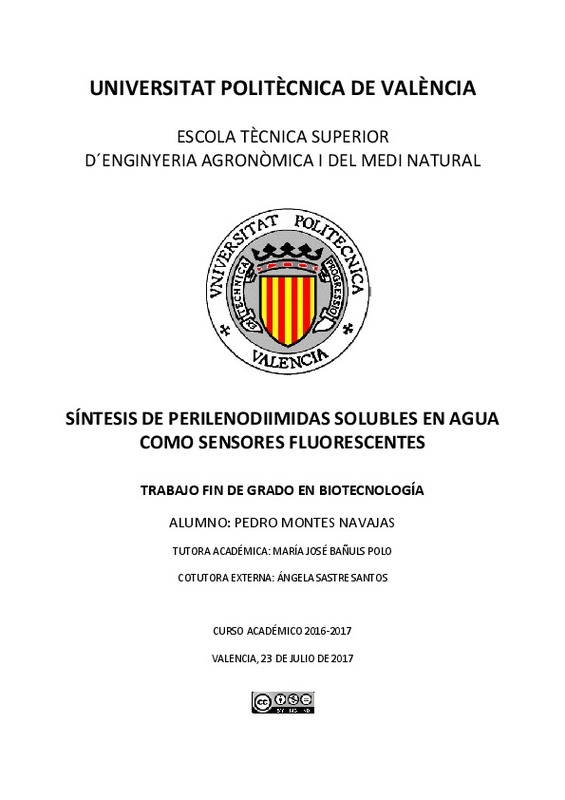|
Resumen:
|
[ES] Una de las herramientas más utilizadas de la Biotecnología son las moléculas sonda fluorescentes
que permitan extraer información analítica, no sólo cualitativa sino sobre todo cuantitativa, de diferentes
procesos ...[+]
[ES] Una de las herramientas más utilizadas de la Biotecnología son las moléculas sonda fluorescentes
que permitan extraer información analítica, no sólo cualitativa sino sobre todo cuantitativa, de diferentes
procesos biológicos. Desde el punto de vista químico, todos estos compuestos presentan unas características
fisicoquímicas especialmente apropiadas para cada aplicación concreta, pero todas ellas deben presentar
una alta solubilidad en medios acuosos y fluidos biológicos. En este sentido, la búsqueda de nuevos
quimiosensores debe enfocarse, por un lado, al diseño y síntesis de moléculas altamente fluorescentes
capaces de modificar sus propiedades fotofísicas al interaccionar con analitos de importancia biológica y, por
otro lado, aumentar su hidrosolubilidad y selectividad por los compuestos diana deseados. Por todo ello, la
familia de derivados de perileno en general y las perilenodiimidas en particular presentan estos requisitos
para poder ser aplicados en sistemas de detección biotecnológicos. Así, se pretende sintetizar una
perilenodiimida bifuncionalizada mediante la condensación de dos unidades
perilenomonoanhídridodiéster con cadenas pegiladas derivadas del etilenglicol que, por un lado,
aumenten la solubilidad de la molécula en medios biológicos y, por otro lado, sirven para interaccionar
con cationes fisiológicamente importantes debido a interacciones con dichas cadenas
[-]
[EN] One of the most used tools of biotechnology are fluorescent probe molecules which can extract, not only qualitative but mostly quantitative analytical information, about different biological processes. From the chemical ...[+]
[EN] One of the most used tools of biotechnology are fluorescent probe molecules which can extract, not only qualitative but mostly quantitative analytical information, about different biological processes. From the chemical point of view, all these compounds have the appropriate physicochemical features for each particular application, but all of them should have a high solubility in aqueous media and biological fluids. As a result, the search for new chemosensors should focus on the one hand, on the design and synthesis of highly fluorescent molecules capable to modify their photophysical properties at the time they interact with analytes of biological significance and, on the other hand, increase their water solubility and selectivity for desired target compounds. Therefore, the family of perylene derivatives in general and perylenediimides in particular present these requirements to be applied in biotechnological systems detection. Thus, it is intended to synthesize a bifunctionalized perylendiimide by condensing two units of perylenemonoanhidridediester with pegylated chains derived from ethylene glycol in order to, on the one hand, increase the solubility of the molecule in biological media and, on the other hand, serve to interact with physiologically important cations due to interactions with such chains.
[-]
|







